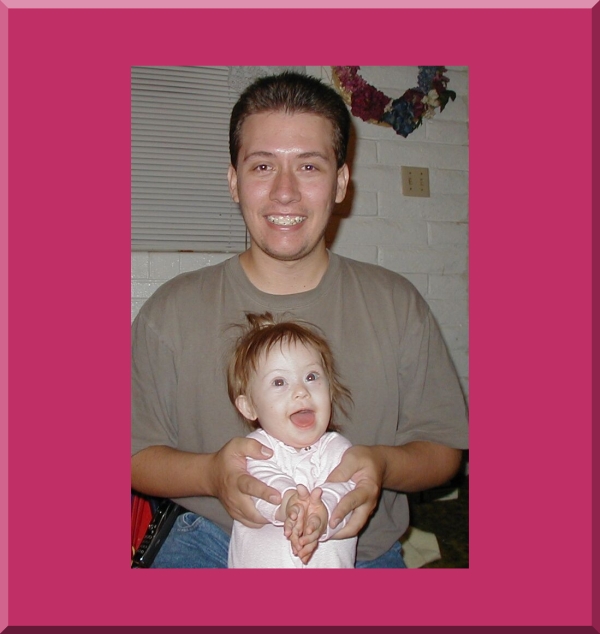 The doctor and med student examined Amanda, we saw Dr Brent Barber, if you live in Tucson, he specializes in congenital heart defects.
The doctor and med student examined Amanda, we saw Dr Brent Barber, if you live in Tucson, he specializes in congenital heart defects. Both heard a murmur, but the echocardiogram did not show ASD, VSD, PDA, or any transpositions, the valves were all normal, the only abnormality was what is called Persistent Left Superior Vena Cava. It is more common in children with down syndrome than the general population, but not by a huge margin.
The doctor said hers drains directly into her right atrium and does not affect heart function, the echo did not show any heart anomaly that would explain her murmur and he indicated it could be anemia causing it. Any cardio moms want to interject an opinion here? We were directed to come back in a year for follow-up.
A Medscape article says:
The embryologic development of systemic and pulmonary veins is complex and subject to considerable variation. During normal development, the anterior cardinal veins, which drain the head, neck, and arm, unite with the posterior cardinal vein in the very early embryonic stage and enter the heart as the right and left horns of the sinus venosus. With the exception that the cardinal veins on the right and the left side drain into the right atrium, the cardinal venous system is bilaterally symmetrical at this stage. Most of the left-sided cardinal system disappears, leaving only the coronary sinus and a remnant known as the ligament of Marshall. Simple failure of obliteration of the left anterior cardinal vein results in the persistence of the LSVC. This usually drains into the right atrium via the coronary sinus. On rare occasions, when developmental arrest occurs at an earlier stage, the coronary sinus is absent and the persistent LSVC drains directly into the atrium.[2]
Individuals with LSVC usually possess a normal right superior vena cava, and thus the condition is not routinely detected. The physiology is normal, and there is no hemodynamic compromise. In rare instances, the LSVC drains directly into the left atrium and may cause a small right-to-left shunt. This lesion usually has little hemodynamic effect, although a variable degree of systemic cyanosis may be seen.[2]
The importance of a persistent LSVC lies in a greater prevalence of other associated congenital cardiovascular defects and significant incidence of rhythm disturbances.[3] Wood[4] found persistent LSVC in 20% of cases of tetralogy of Fallot and 8% of patients with Eisenmenger's syndrome. Hancock[5] reported a high prevalence of leftward P axis with a normal PR interval, but its significance is not clear.[6]
Persistent LSVC can be accurately diagnosed noninvasively by echocardiography in conjunction with Doppler and/or contrast ultrasonography. One of the clues to the diagnosis is an unusually large coronary sinus on two-dimensional views. It appears as a dilated, echo-free space posteriorly in the atrioventricular groove between the left atrium and ventricle. Saline microbubble contrast can be used to enhance the accuracy.




















6 comments:
That is wonderful.
What wonderful news!
So glad you got good news about Amanda. Have been praying and waiting for a update.
carol n
Sounds like an innocent defect. Micah, too, has an innocent defect that he's monitored every 6 months for. Not bad!
Meredith
Glad to hear she has a healthy heart!!
I've never heard of this defect. Glad it is not too serious. I need to catch up on blogs, I'm behind.
Post a Comment